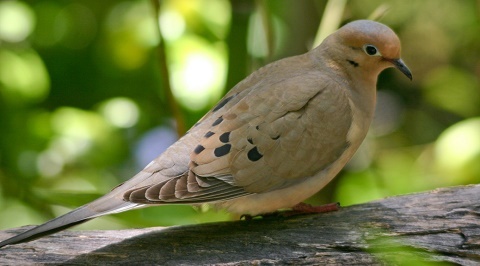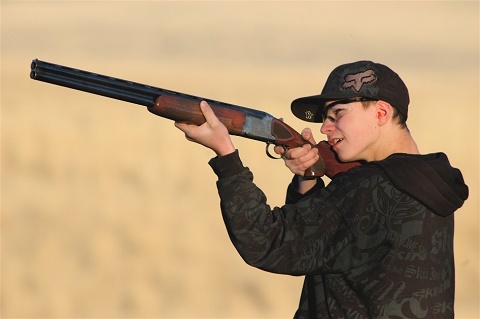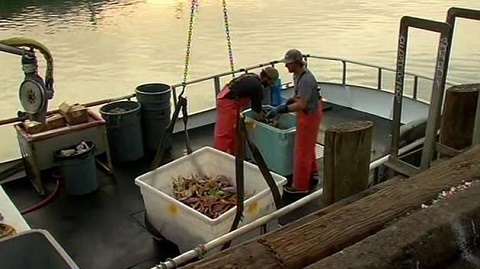Fish Report for 8-18-2016
First Dove Season Opener Approaches

by California Department of Fish & Wildlife
8-18-2016
Website
The first of two opening days of California’s dove hunting season is fast approaching. This year’s season for mourning dove, white-winged dove, spotted dove and ringed turtle dove will run from Thursday, Sept. 1 through Thursday, Sept. 15 statewide, followed by a second hunt period, Saturday, Nov. 12 through Saturday, Dec. 26.
Mourning dove and white-winged dove have a daily bag limit of 15, up to 10 of which may be white-winged dove. The possession limit is triple the daily bag limit. There are no limits on spotted dove and ringed turtle dove. Hunting for Eurasian collared dove is legal year-round and there are no limits.
Please note that nonlead ammunition is now required when hunting on all wildlife areas and ecological reserves managed by the California Department of Fish and Wildlife (CDFW). Use of lead shot is still legal for hunting dove, quail and snipe on federal properties, public lands not managed by CDFW and private lands, including licensed game bird clubs, until July 1, 2019. Please plan accordingly. For more information please see the CDFW nonlead ammunition page.
A dove identification guide can be found on the CDFW website, along with a map of upland game fields in Imperial County, the state’s hub for dove hunting.
Although parts of California are still in a serious drought, mourning doves are dry environment birds and are capable of exploiting many food types and sources. The 2016 statewide dove banding effort, which is still in progress, has indicated so far that there is no shortage of mourning doves for the opener. Hunters who encounter a banded bird are asked to report it to the USGS Bird Banding Lab (www.reportband.gov). Banded birds are part of important biological monitoring and reporting banded birds provides valuable data. Mourning and white-winged doves are migratory and the hunting regulation framework is determined by the U.S. Fish and Wildlife Service (USFWS). States are required to set hunting regulations within this framework. The migratory dove populations are managed similarly to migratory waterfowl and based on a flyway population. California is part of the Western Management Unit, which includes six other western states. In addition to banding data, breeding bird surveys, call count surveys, wing surveys and Harvest Information Program (HIP) data all provide information that is included in the effort to monitor the population status by management unit. These results are used by the USFWS to establish hunting seasons, bag limits and possession limits.
Dove hunting is considered a great starting point for new hunters. There is very little equipment required and just about any place open for hunting will have mourning doves. Minimum requirements are a valid hunting license with an upland game bird stamp (if the hunter is 18 or older) and HIP validation, good footwear, a shotgun, shotgun shells and plenty of water. Hunters should be careful not to underestimate the amount of fluids needed, especially during the first half of the season.
Most successful dove hunters position themselves in a known flyway for doves. These can be to and from roost sites, water, food sources or gravel. Doves are usually taken by pass shooting these flyways, but hunters may also be successful jump shooting. Dove movement is most frequent in the early mornings and late evenings when they are flying from and to their roost sites (this is when the majority of hunters go into the field). Late morning to early afternoon can be better for jump shooting. Hunters should scout out dove activity in the area a few times just prior to hunting.
Important laws and regulations to consider include the following:
- Shoot time for doves is one half hour before sunrise to sunset.
- All hunters — including junior hunters — are required to carry their hunting license with them.
- Hunters must have written permission from the landowner prior to hunting on private land.
- Bag limits apply to each hunter and no one can take more than one legal limit per day.
- It is illegal to shoot within 150 yards of an occupied dwelling.
- It is illegal to shoot from or across a public roadway.
It is the responsibility of every hunter to know and follow all laws.
Safety is the most important part of any hunting adventure. Although wearing hunter orange (blaze) is not required by law, it may be required in specific areas. Wearing a minimum of a hunter orange hat is recommended, especially when sitting or when hunting in deep vegetation. Safety glasses are a simple way to protect the eyes and are available in many shades for hunting in all types of lighting situations.
The weather throughout the state on Sept. 1 is expected to be hot and dry. CDFW urges hunters to drink plenty of fluids, wear sun protection and have a plan in case of an accident.
A summary of the 2016-17 dove hunting regulations can be found on CDFW’s website.
< Previous Report Next Report >
< Previous Report Next Report >
More Reports

8-5-2016
Question: I am 16 years old and have my hunter education certification. I was wondering if it is legal for...... Read More

7-7-2016
Following the lifting of a health advisory in the same area, the commercial and recreational rock crab fisheries are now...... Read More

Website Hosting and Design provided by TECK.net